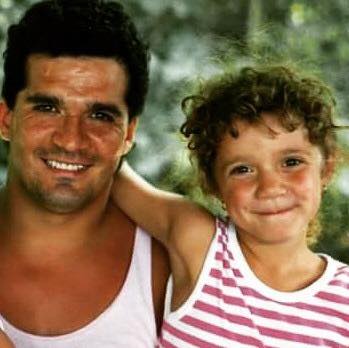Before Johnna Sells became a campus 911 dispatch center supervisor, she was just a girl with dreams of following in the footsteps of her greatest hero: her dad, Luis Gonzalez.
A retired deputy sheriff at the Lucas County Sheriff’s Department for 33 years, Gonzalez got his start at Ohio State.
“My dad is my role model. I saw him making a difference in the community,” Sells said. “My goal was to finish what he started, and come to OSU.”
While police officers and firefighters are often on the frontlines of an emergency, it’s 911 dispatchers who serve as the first point of contact when a person on campus is in trouble. And the role Sells serves at Ohio State reaches far beyond answering a call.
“There’s not a day that goes by that I don’t feel like I’m making a difference in the community,” she said.
Sells familiarized herself with the main control center — a smaller version of a radio communications center — while her dad worked in Ohio State law enforcement, which prepared her for her job as a dispatcher for Ohio State Student Safety Service.
“After a couple of times, I was able to master most of that room, and they even let me play with the radios,” Sells said. “It gave me early exposure to that.”
Her dad wasn’t always receptive to her standing in his shoes, but her passion for law enforcement and seeing her father’s impact in the community inspired her to pursue her dreams, Sells said.
She now serves in a managerial position as the communications and security technology supervisor, a role in which she is responsible for overseeing the campus dispatch center.

Johnna Sells pictured with her dad, Luis Gonzalez, who served as a deputy sheriff with Lucas County Sheriff’s Department for 33 years. Credit: Courtesy of Johnna Sells
“As dispatchers, we are truly the first of the first responders,” Sells said. “We are the ones who tell the officers where to go, the firefighters where to go, the ambulances where to go –– we disseminate everything.”
Her dad’s influence doesn’t stop at being her hero. Sells said her dad’s Mexican heritage helps her fulfill her duty as a Spanish-speaking translator when needed in emergencies.
“In case of emergency, I can help out by getting a description of where and what type of emergency it is,” Sells said. “It at least makes me feel like I’m giving the same level of service to every community that needs help.”
Being a dispatcher at one of the largest campuses in the country is no simple task. The center receives about 7,000 calls per month, reaching its peak during fall semester and football season, Sells said.
In a demanding job like hers, Sells said that teamwork among her staff is essential to getting an emergency under control.
“They can pair together very well,” Sells said. “They understand that while one person is taking the call, another person is also starting that response.”
Dispatchers are not only taking the call and hearing the emergency, but they’re also “the first eyes” on the scene, pulling video footage of the area where the emergency is taking place, Sells said.
Based on the severity and type of emergency, dispatchers are then responsible for sending law enforcement, medical or fire officials to the scene, Sells said.
Dan Hedman, communications director for the Office of Administration and Planning, said campus dispatchers are like “the glue that holds everything together,” serving as the central point connecting University Police, Columbus Police and other law enforcement during emergencies.
“The job that dispatchers and the communications center do is so valuable,” Hedman said. “When someone calls, they’re not only trying to get information, but they’re trying to get the caller resources. They’re trying to get them to the hospital. They’re trying to get them an officer or someone to help them feel safe.”
Sells said that keeping campus safe is her way of giving back to a community that’s done so much for her and her family.
When Sells came to Ohio State at 17 years old, her mother had just passed away from cancer a few months prior, leaving her feeling homeless.
Ohio State gave her a home, Sells said.
“The OSU community really took me in and helped shape me,” Sells said. “What better way to serve the community that you love than to be on the front line?”



